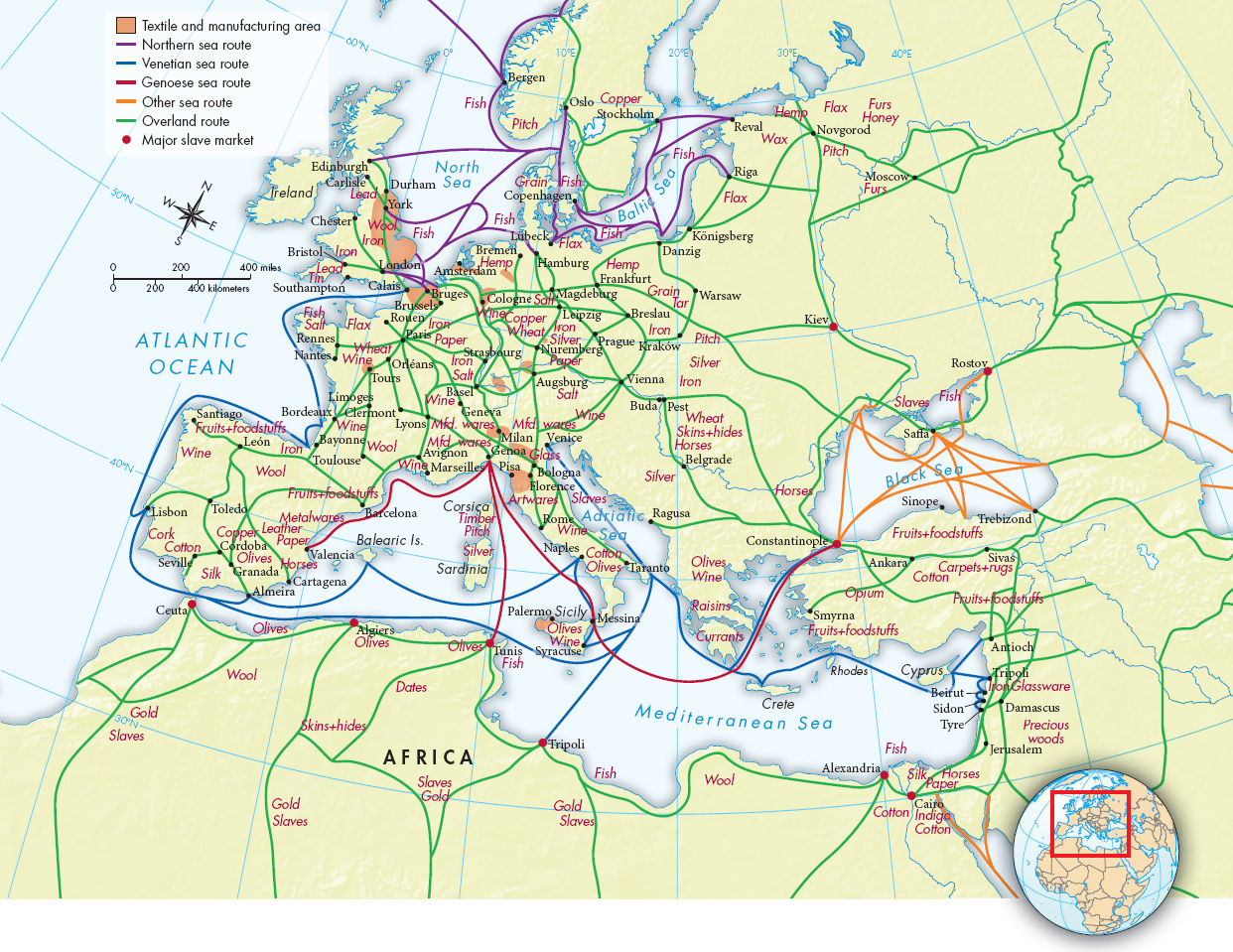The Revival of Long-Distance Trade
The growth of towns went hand in hand with a revival of trade as artisans and craftsmen manufactured goods for both local and foreign consumption (Map 10.2). Most trade centered in towns and was controlled by professional traders. Long-

In the late eleventh century, the Italian cities, especially Venice, led the West in trade in general and completely dominated trade with the East. Venetian ships carried salt from the city’s own lagoon, pepper and other spices from India and North Africa, silks and carpets from Central Asia, and slaves from many places. In northern Europe, the towns of Bruges, Ghent, and Ypres (EE-
From the late eleventh through the thirteenth centuries, Europe enjoyed a steadily expanding volume of international trade. Trade surged markedly with demand for sugar from the Mediterranean islands to replace honey; spices from Asia to season a bland diet; and fine wines from the Rhineland, Burgundy, and Bordeaux to make life more pleasant. Other consumer goods included luxury woolens from Flanders and Tuscany, furs from Ireland and Russia, brocades and tapestries from Flanders, and silks from Constantinople and even China. As the trade volume expanded, the use of cash became more widespread. Beginning in the 1160s, the opening of new silver mines in Germany, Bohemia, northern Italy, northern France, and western England led to the minting and circulation of vast quantities of silver coins.